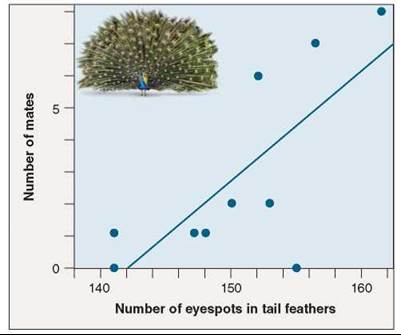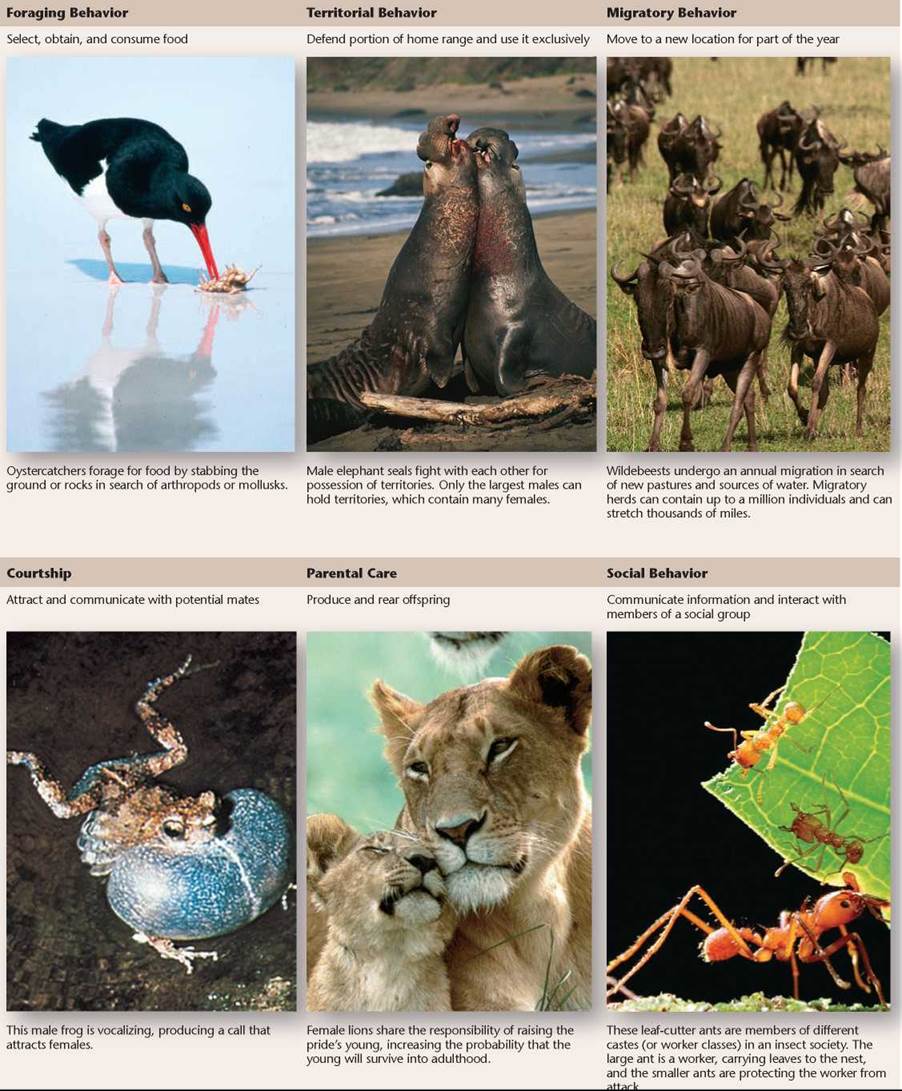THE LIVING WORLD
Unit Eight. The Living Environment
37. Behavior and the Environment
Animals exhibit many different types of behaviors (table 37.1), but reproductive behavior is particularly complex, encompassing a variety of behaviors, including courtship and parental care. The reproductive success of an animal is directly affected by its reproductive behaviors because these behaviors influence how long the individual lives, how frequently it mates, and how many offspring it produces per mating. The second of these factors, competition for mating opportunities, has been termed sexual selection.
Sexual selection involves both intrasexual selection, or interactions between members of one sex (“the power to conquer other males in battle,” as Darwin put it), and intersexual selection (“the power to charm”).
Intrasexual selection leads to the evolution of structures used in combat with other males (such as a deer’s antlers or a ram’s horns). Combat for mates, whether ritual or real, is a form of agonistic behavior, a confrontation waged by threats, displays, or actual combat.
Intersexual selection, also called mate choice, leads to the evolution of complex courtship behaviors, and of ornaments used to “persuade” members of the opposite sex to mate, such as long tail feathers or bright plumage. For example, the male peacock will parade in front of females with tail feathers displayed. Figure 37.12 shows that the more eyespots on a male’s tail feathers, the more mates he will attract.

Figure 37.12. The male peacock's tail feathers are a product of sexual selection.
Experiments show that female peahens, whose tail feathers are drab, prefer to mate with males with greater numbers of colorful "eyespots" in their tail feathers.
The Benefits of Mate Choice
Why did mating preferences evolve? What is their adaptive value? Biologists have proposed several reasons:
1. In many species of birds and mammals, males help raise the offspring. In these cases, females would benefit by choosing the male that can provide the best care—the better the male parent, the more offspring she is likely to rear successfully.
2. In other species, males provide no care, but maintain territories that provide food, nesting sites, and predator refuges. In such species, females that choose males with the best territories will maximize reproductive success.
3. In some species, males provide no direct benefits of any kind to the female. If a female selects a more vigorous male, probably at least to some degree the result of a good genetic makeup, the female will be ensuring that her offspring receive good genes from their father.
Mating Systems
Reproductive behavior in animals varies substantially from one species to the next. Some animals mate with many partners during the breeding season, others with only one. The typical number of mates an animal has during its breeding season is called the mating system. Among animals, there are three principal mating systems: monogamy (one male mates with one female), polygyny (one male mates with more than one female), and polyandry (one female mates with more than one male).
Like mate choice, mating systems have evolved to maximize reproductive fitness. For instance, a male may defend a territory with resources sufficient for more than one female.
A male holding such a high-quality territory may already have a mate, but it is still more advantageous for a female to breed with that male than with an unmated male that defends a low-quality territory. In this way, natural selection would favor the evolution of polygyny.
Although polygyny is much more common in animals, polyandrous systems—in which one female mates with several males—are known in a variety of animals. For example, in the spotted sandpiper, a seashore bird, males take care of all incubation and parenting, and females mate and leave eggs with two or more males.
Reproductive Strategies
During the breeding season, animals make several important “decisions” concerning their choice of mates (mate choice), how many mates to have (mating system), and how much time and energy to devote to rearing offspring (parenting). These decisions are all aspects of an animal’s reproductive strategy, a set of behaviors that has evolved to maximize that species’ reproductive success. The two sexes of a species often have different reproductive strategies, reflecting the different parental investment each sex makes in producing and rearing offspring. In most animal species, females exercise far more mate choice, and in these species female parental investment is much greater than that of males. In species with biparental care, male and female parental investments are roughly equal, and both sexes tend to exercise mate choice.
TABLE 37.1. ANIMAL BEHAVIORS

Key Learning Outcome 37.10. Natural selection has favored the evolution of mate choice, mating system, and parenting behaviors that maximize reproductive success.